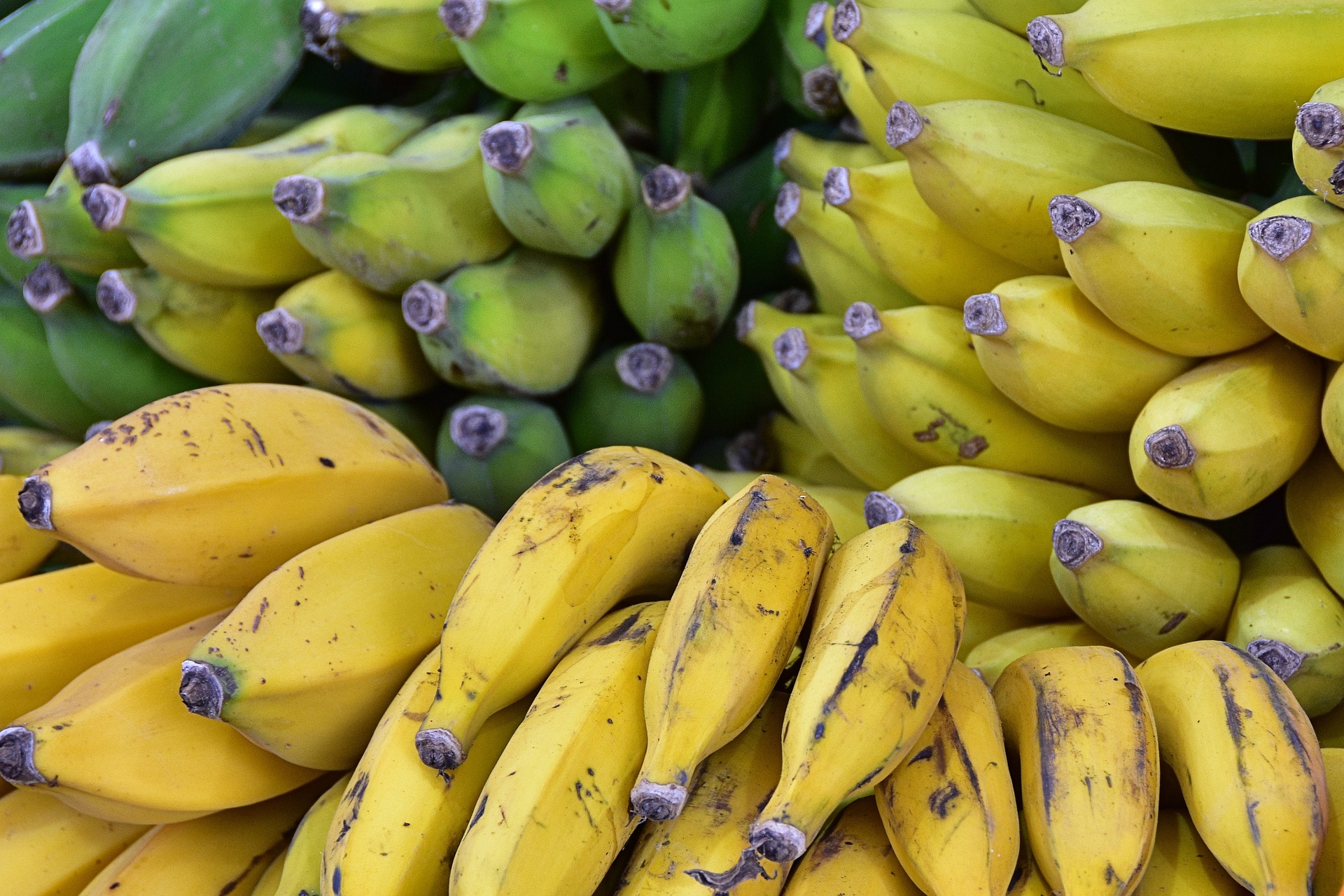A banana does not only taste nice, it also has nutritional value, and banana plants can grow in most African countries. Farmers in Africa can consider planting bananas as an option for income or personal use. In this article we give more information on how to plant and fertilise your banana plants to grow better.
Planting
Bananas can be planted by using tissue culture plants or bits and suckers.
A. Planting method for tissue culture plants
Tissue culture plants are small plants which are grown from the tissue of the banana plant. They are sold in bags, ready for planting. For convenience, this is the preferred method for planting bananas.
- Prepare for planting by digging holes.
- Add old kraal manure and put some loose soil back into the holes. MAP can be added in the hole. Do not add more than 10 g of MAP into each planting hole.
- Remove the plastic bag before planting and place the plant in the hole. The soil in the bag must not break up.
- Fill the hole with soil around the plant and compact it.
- Check correct planting depth when planting.

B. Planting method for bits and suckers
Bits are small portions of the banana plant cut from the rhizome (corm) of the plant to which a bud is attached. Suckers are shoots growing from the rhizome of banana plants and they grow into new plants.
- When planting bits, the planting depth must be 10 cm and the bit also about 10 cm.
- The planting method for suckers is the same as for planting tissue culture plants.
Spacing
Space the rows three metres apart and the plants 1,5 metre in the row. The size of the hole must be 30 cm x 30 cm and the depth about knee height.
Dos and don’ts when planting
- Do not damage the plant or dislodge the soil when removing the bag – use a knife instead of a hoe.
- Do not plant too shallow or too deep and allow a space of 10 cm between the plant and the soil surface.
- Irrigate the banana plants after planting.
- The best planting time is December.
Fertilising
Make the soil fertile for the banana plants after planting by applying topdressing.
- Apply the first topdressing a month after planting (January) using 2 bags of LAN fertiliser per hectare (50 g per plant).

- Apply the second topdressing three months after planting (March) using two bags of LAN fertiliser per hectare (50 g per plant) and four bags of KCI fertiliser per hectare (100 g per plant).

- Apply the third topdressing five months after planting (May) using four bags of KCI (100 g per plant) and two bags of LAN fertiliser per hectare (50 g per plant).

Do not apply topdressing in June, July and in August.
- Topdress again nine months after planting (September) using four bags of KCI (100 g per plant) and two bags of LAN fertiliser per hectare (50 g per plant).
- Topdress again 11 months after planting (November). Use four bags of KCI (100 g per plant) and two bags of LAN fertiliser per hectare (50 per plant).
- Apply the last topdressing in January using four bags of KCI (100 g per plant) and two bags of LAN fertiliser per hectare (50 g per plant).
- Make compost from old vegetable leaves, chicken and kraal manure, which can supplement the fertiliser programme.

When planting banana plants in prepared holes, you do not need to till the whole land and you can place precise quantities of fertiliser per hole. (Photo: wikifarmer.com)
This article is published with acknowledgement to the ARC-Institute for the use of their manuals. For more information on banana production, visit the ARC’s website at www.arc.agric.za.









